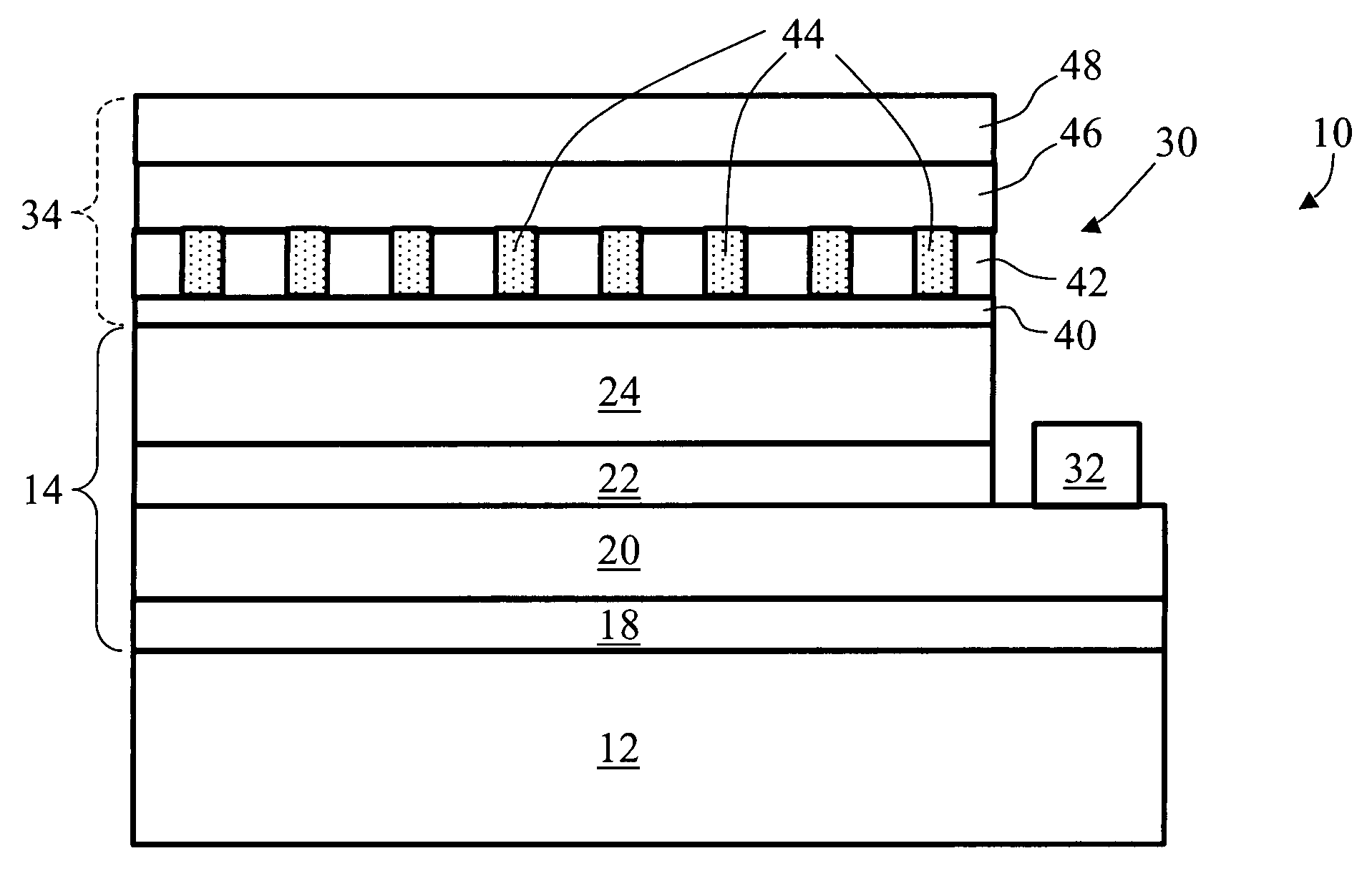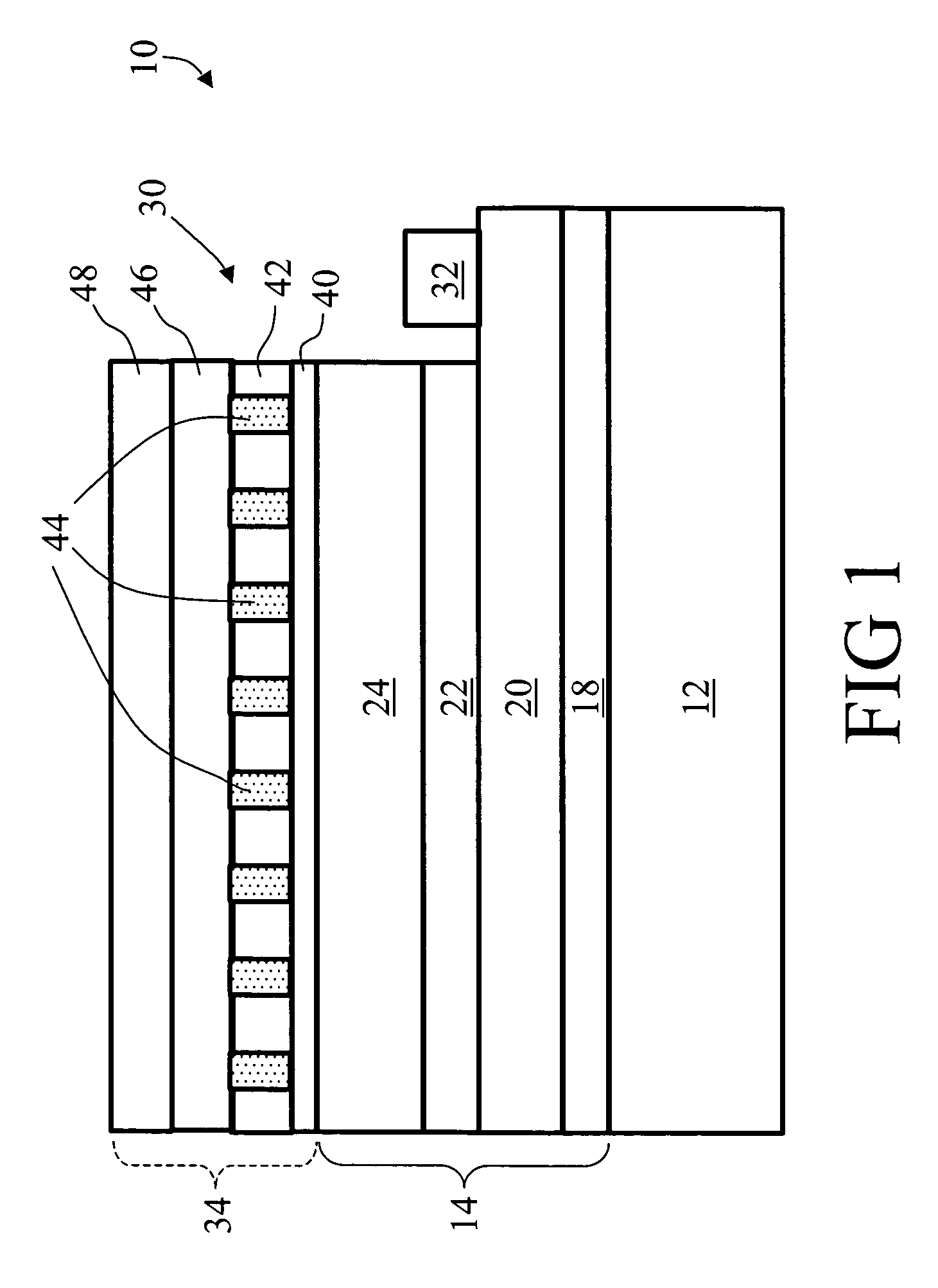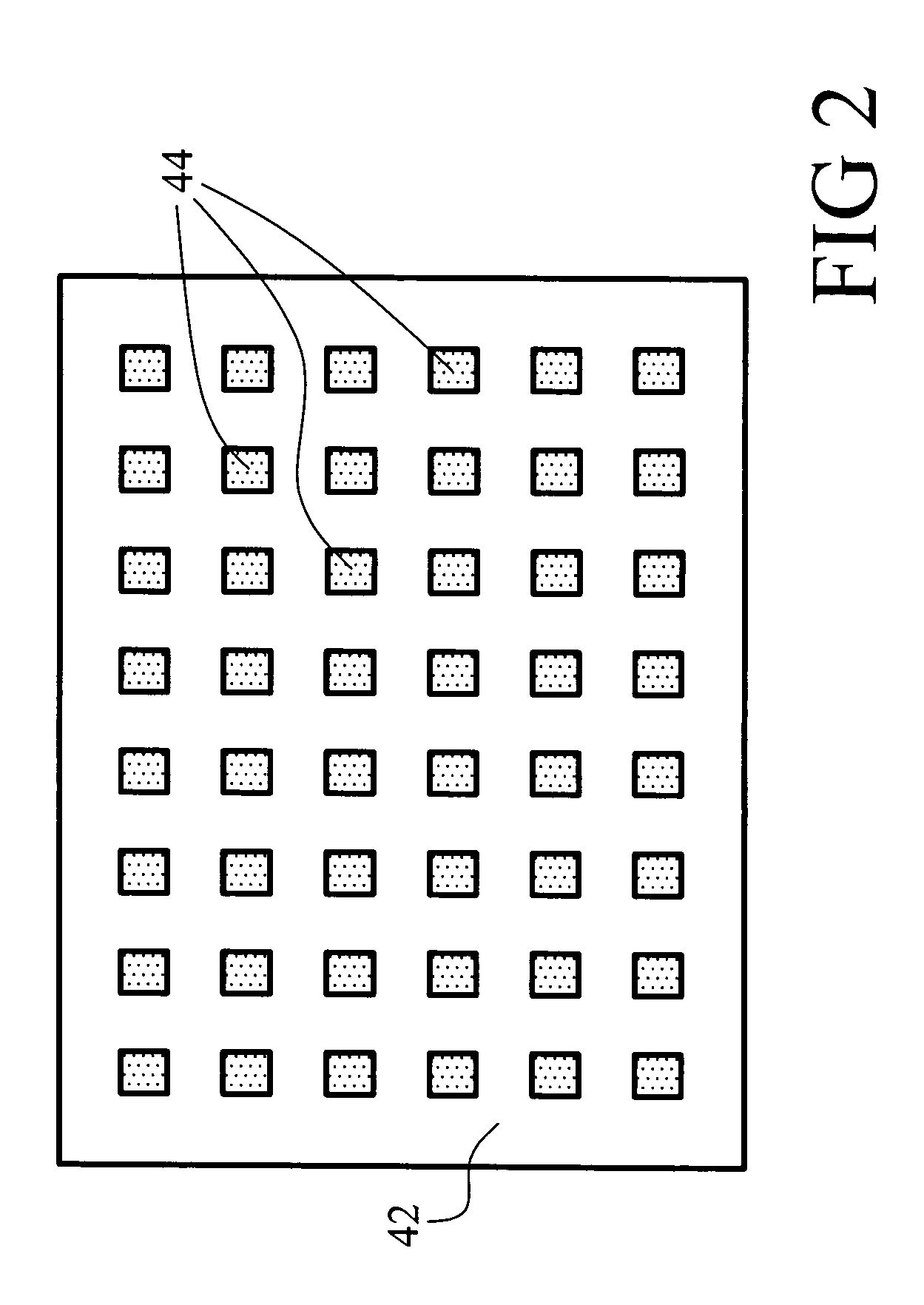Flip-chip light emitting diode
a light-emitting diode and flip-chip technology, applied in the field of electronic arts, can solve the problems of difficult simultaneous optimization of optical, electrical and thermal properties of the electrode, inability to tune the electrode reflectivity, and low metal electrode reflectivity in finished devices
- Summary
- Abstract
- Description
- Claims
- Application Information
AI Technical Summary
Problems solved by technology
Method used
Image
Examples
Embodiment Construction
[0017] With reference to FIG. 1, a flip-chip light emitting diode device 10 includes a light-transmissive substrate 12 with a plurality of semiconductor layers 14 deposited thereon. In a preferred embodiment, the substrate is sapphire, ZnO, lithium gallate, AlN, AlxInyGa1-y-xN, or silicon carbide (SiC), and the semiconductor layers 14 are selected group III-nitride layers such as GaN layers, AlN layers, InN layers, and ternary and quaternary alloys thereof.
[0018] The semiconductor layers 14 are preferably formed on the light-transmissive substrate 12 by metalorganic chemical vapor deposition (also known in the art as organometallic vapor phase epitaxy and similar nomenclatures), molecular beam epitaxy, chemical beam epitaxy, or another epitaxial film deposition technique. However, light emitting diodes of other material systems, such as the group III-phosphides, group III-arsenides, and group IV semiconductors, can also be used. If no suitable light transmissive substrate for epita...
PUM
 Login to View More
Login to View More Abstract
Description
Claims
Application Information
 Login to View More
Login to View More - Generate Ideas
- Intellectual Property
- Life Sciences
- Materials
- Tech Scout
- Unparalleled Data Quality
- Higher Quality Content
- 60% Fewer Hallucinations
Browse by: Latest US Patents, China's latest patents, Technical Efficacy Thesaurus, Application Domain, Technology Topic, Popular Technical Reports.
© 2025 PatSnap. All rights reserved.Legal|Privacy policy|Modern Slavery Act Transparency Statement|Sitemap|About US| Contact US: help@patsnap.com



